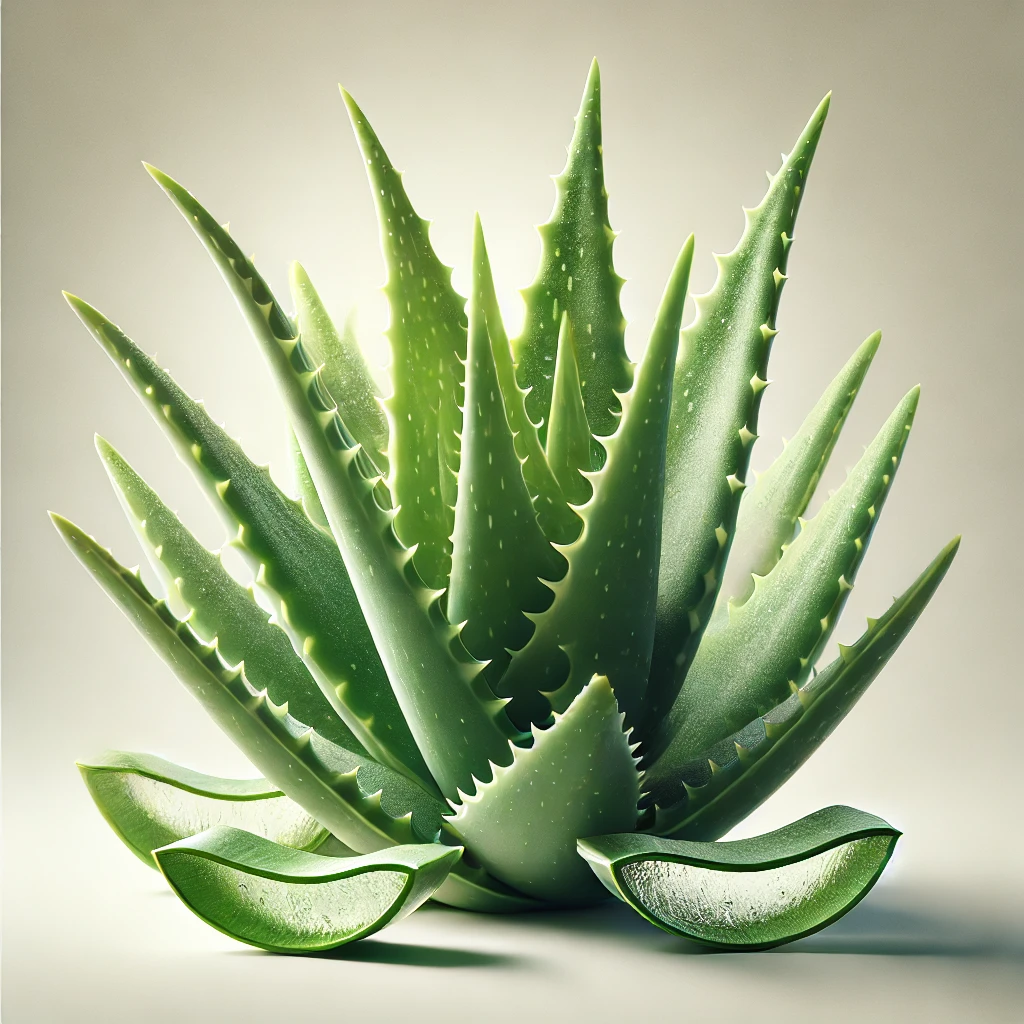
Aloe Vera, often referred to as the “plant of immortality,” has been revered for centuries for its remarkable healing and medicinal properties. This succulent plant, with its thick, fleshy leaves filled with a gel-like substance, is a powerhouse of nutrients and bioactive compounds. From skincare to digestive health, Aloe Vera has found its way into countless products and home remedies. In this deep dive, we’ll explore the full specifications of Aloe Vera, its benefits, uses, and how to incorporate it into your daily life.
What is Aloe Vera?
Aloe Vera (Aloe barbadensis miller) is a perennial, drought-resistant plant belonging to the Liliaceae family. It is native to the Arabian Peninsula but is now cultivated worldwide in tropical and subtropical climates. The plant has thick, green, lance-shaped leaves that store water and contain a clear gel and a yellow latex. Both the gel and latex are used for various medicinal and cosmetic purposes.
Botanical Specifications of Aloe Vera
- Scientific Name: Aloe barbadensis miller
- Family: Liliaceae (Lily family)
- Plant Type: Succulent perennial
- Height: 60–100 cm (24–39 inches)
- Leaves: Thick, fleshy, green, lance-shaped, with serrated edges
- Flowers: Yellow or orange tubular flowers on a tall spike
- Gel: Clear, mucilaginous substance found in the inner leaf
- Latex: Yellow sap found just under the leaf skin
Nutritional Profile of Aloe Vera
Aloe Vera is packed with over 75 active compounds, including:
- Vitamins: A (beta-carotene), C, E, B12, folic acid, and choline.
- Minerals: Calcium, magnesium, zinc, chromium, selenium, sodium, iron, potassium, copper, and manganese.
- Enzymes: Amylase, lipase, and peroxidase, which aid digestion.
- Amino Acids: Contains 20 of the 22 essential amino acids, including 7 of the 8 essential ones.
- Sugars: Monosaccharides (glucose, fructose) and polysaccharides (glucomannans).
- Fatty Acids: Cholesterol, campesterol, and beta-sitosterol, which have anti-inflammatory properties.
- Anthraquinones: Aloin and emodin, which have laxative and pain-relieving effects.
- Hormones: Auxins and gibberellins, which promote wound healing and have anti-inflammatory properties.
Health Benefits of Aloe Vera
1. Skin Health
- Moisturizes and Heals: Aloe Vera gel is a natural moisturizer that soothes dry, irritated skin and promotes healing of wounds, burns, and cuts.
- Anti-Aging: Its antioxidants, such as vitamins C and E, help reduce wrinkles and improve skin elasticity.
- Acne Treatment: The antibacterial and anti-inflammatory properties help reduce acne and prevent breakouts.
- Sunburn Relief: Aloe Vera gel cools and soothes sunburned skin, accelerating the healing process.
2. Digestive Health
- Relieves Constipation: Aloe latex contains anthraquinones, which have a laxative effect.
- Soothes Digestive Tract: Aloe Vera gel can reduce inflammation in the gut, helping with conditions like irritable bowel syndrome (IBS).
- Detoxifies: Helps cleanse the digestive system and improve nutrient absorption.
3. Immune System Support
- The polysaccharides in Aloe Vera stimulate white blood cells, boosting the immune system.
- Its anti-inflammatory properties help reduce chronic inflammation, which is linked to many diseases.
4. Oral Health
- Aloe Vera is effective in reducing plaque and gingivitis due to its antibacterial properties.
- It can be used in toothpaste or mouthwash for healthier gums and teeth.
5. Hair Care
- Promotes hair growth by improving blood circulation to the scalp.
- Reduces dandruff and soothes an itchy scalp.
- Conditions and strengthens hair, preventing breakage.
6. Blood Sugar Regulation
- Studies suggest that Aloe Vera can help lower blood sugar levels in people with type 2 diabetes.
- Improves insulin sensitivity.
7. Heart Health
- Beta-sitosterol in Aloe Vera helps lower cholesterol levels.
- Improves blood circulation and reduces the risk of cardiovascular diseases.
Uses of Aloe Vera
1. Topical Applications
- Skin Care: Used in creams, lotions, and gels for moisturizing and healing.
- First Aid: Applied to burns, cuts, and insect bites for quick relief.
- Hair Masks: Mixed with coconut oil or honey for deep conditioning.
2. Internal Consumption
- Juice: Aloe Vera juice is consumed for digestive health and detoxification.
- Supplements: Available in capsule or tablet form for immune support and overall wellness.
3. Cosmetic Products
- Found in makeup, shampoos, conditioners, and sunscreens for its soothing and hydrating properties.
4. Home Remedies
- Used in DIY face masks, scrubs, and hair treatments.
How to Use Aloe Vera
1. Extracting Aloe Vera Gel
- Cut a mature leaf from the plant.
- Slice off the serrated edges and the top layer of the leaf.
- Scoop out the clear gel using a spoon.
- Store the gel in an airtight container in the refrigerator for up to a week.
2. Applying Aloe Vera Gel
- For skin: Apply directly to the affected area and massage gently.
- For hair: Mix with a carrier oil and apply to the scalp and hair. Leave for 30 minutes before rinsing.
3. Drinking Aloe Vera Juice
- Mix 2 tablespoons of Aloe Vera gel with water or fruit juice.
- Consume once daily for digestive health.
Precautions and Side Effects
While Aloe Vera is generally safe, it’s important to use it responsibly:
- Allergic Reactions: Some people may experience skin irritation or allergic reactions. Perform a patch test before use.
- Latex Concerns: Aloe latex can cause stomach cramps or diarrhea if consumed in large amounts.
- Pregnancy and Breastfeeding: Avoid internal use during pregnancy or breastfeeding.
- Medication Interactions: Consult a doctor before using Aloe Vera if you’re on medications, especially for diabetes or heart conditions.
Growing and Caring for Aloe Vera
- Climate: Thrives in warm, dry climates.
- Soil: Requires well-draining, sandy soil.
- Watering: Water sparingly; overwatering can cause root rot.
- Sunlight: Prefers indirect sunlight or partial shade.
- Propagation: Grows from offsets (pups) that sprout from the base of the plant.
Conclusion
Aloe Vera is truly a gift from nature, offering a wide range of health and beauty benefits. Whether you’re looking to improve your skin, boost your digestion, or enhance your overall well-being, this versatile plant has something to offer. By understanding its specifications, benefits, and uses, you can harness the power of Aloe Vera to lead a healthier, more natural lifestyle. Always remember to use it responsibly and consult a healthcare professional if you have any concerns.
Embrace the magic of Aloe Vera and let this ancient remedy work wonders in your modern life!
